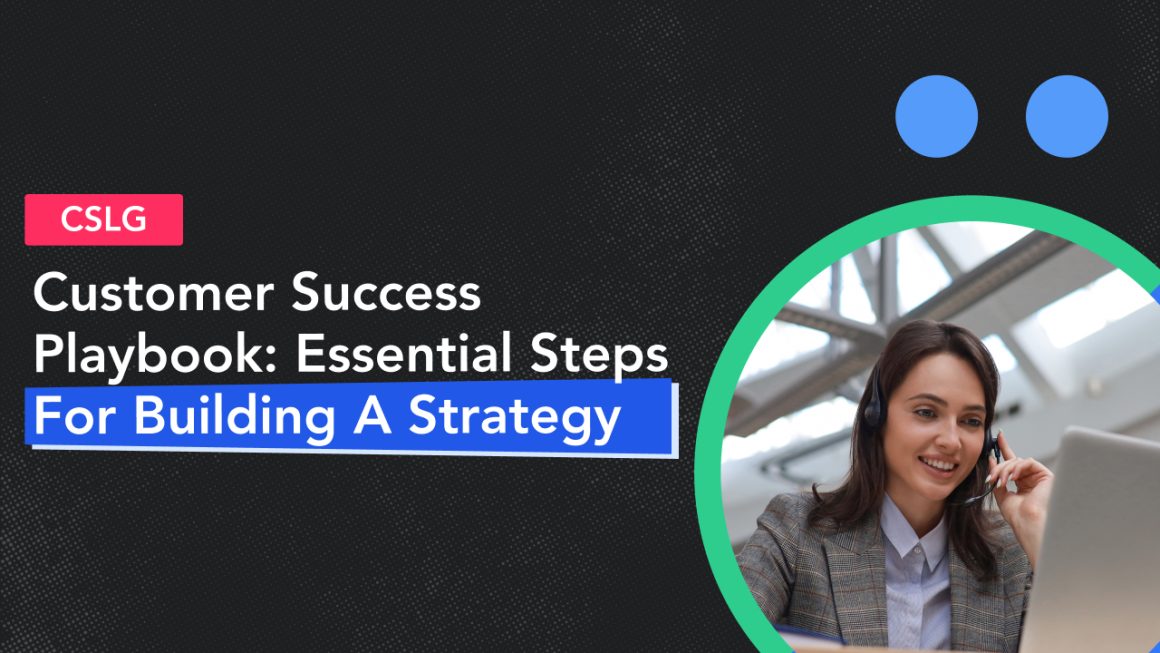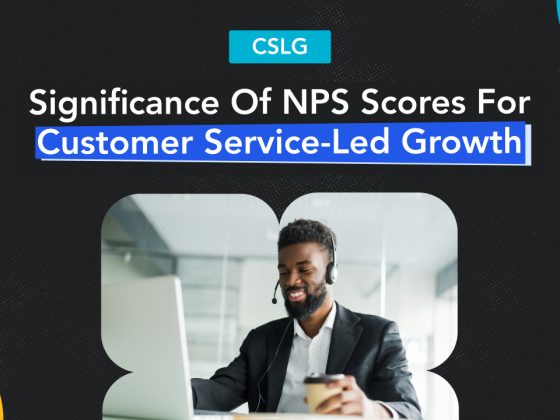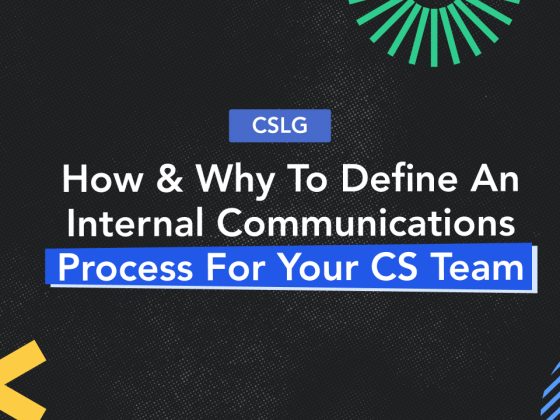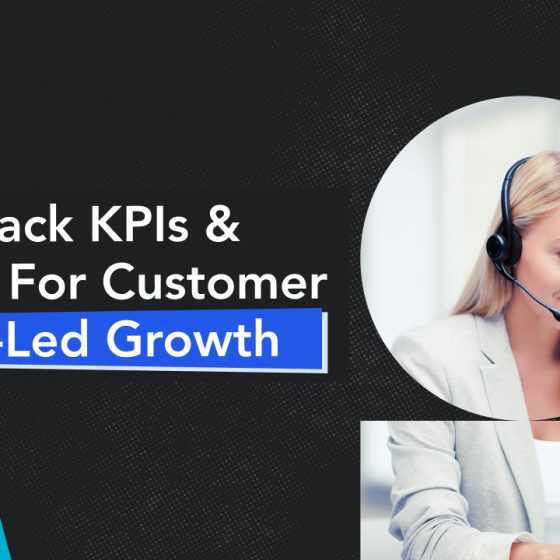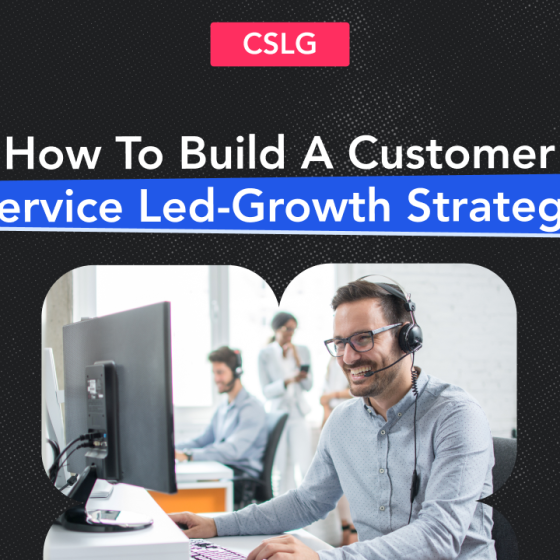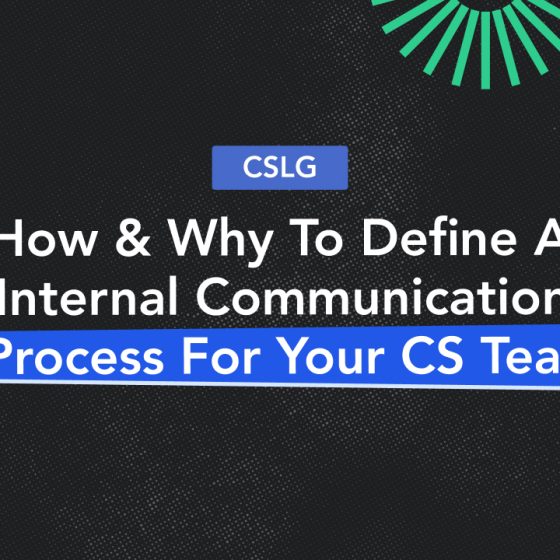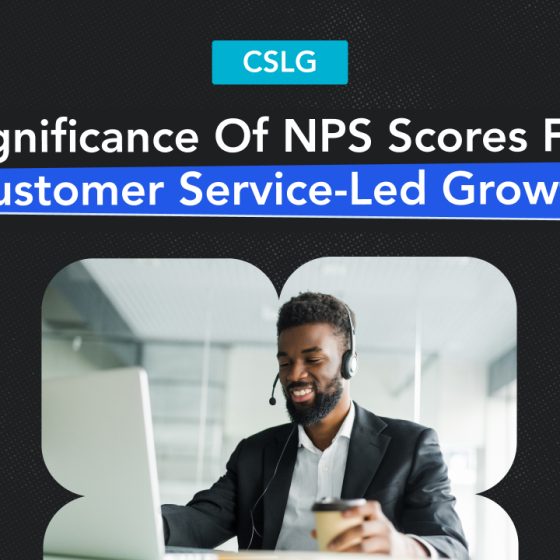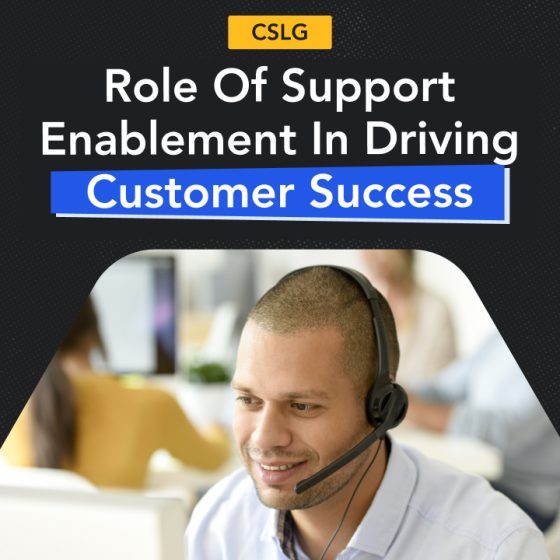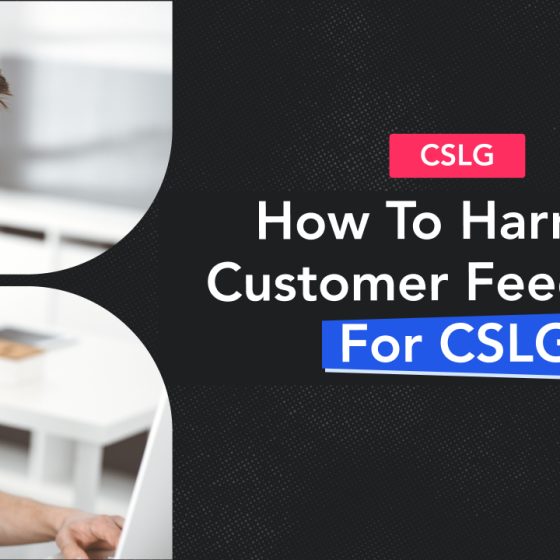Your brand’s success depends on somebody else’s success.
In a world where people have zillions of options, you cannot rely on your service/product’s quality. A good offering can no longer guarantee instant sales.
So, what do businesses need today? A well-defined customer success process to deliver impeccable customer experiences – because it is not just about your products but how customers reach their desired outcomes. In fact, 6 out of 10 people will turn to a different brand after a single bad customer experience.
Plus, if you are a subscription-based business, customer experience goes beyond the initial purchase. Now, customer retention has replaced customer acquisition as the key enabler to enjoy high valuation and long-term growth.
Hence, to earn long-lasting stickiness with customers and positive word of mouth, you must deliver memorable experiences with your products/services.
Besides, with the looming recession fears and the rising disparity between acquisition and retention costs, it is high time to establish customer success processes for service-led growth in your business.
Let’s get the ball rolling.
What is customer success?
Customer success is an organizational mindset that prioritizes helping customers hit their key goals with brands’ products/services. Often, this implies predicting customers’ needs and pain points and taking proactive actions to exceed their expectations.
No wonder, this is a win-win approach. On the one hand, your customers get ample support to achieve their targets. On the other hand, your brand experiences more repeat purchases, upselling opportunities, reduced customer churn, better customer retention, and lower acquisition costs as buyers become long-term brand patrons.
“You can focus on adoption, retention, expansion, or advocacy; or you can focus on the customers’ desired outcome and get all of those things.” – Lincoln Murphy, customer success growth expert.
Here is the idea behind customer success:
Your customer service agents go the extra mile to understand people’s demands and offer solutions to help them fulfill their objectives.
If you have targeted and qualified your leads correctly, your customer service will be instrumental in accomplishing the mission.
Customer success extends beyond simply locking clients in for annual/quarterly contracts. It combines customer support, sales, and marketing teams – all to ensure that your solutions help clients improve their returns on investments (ROI).
What is a customer success process?
A customer success process is the playbook brands lay out to proactively engage and support clients at every touchpoint of the customer lifecycle. These series of actions ensure that users squeeze the most value out of companies’ products/services to achieve the desired outcomes.
Imagine a funnel that begins with a problem and ends with the desired outcome. Customers enter the funnel and endure friction while using the service/product. If the level of conflict is substantial, they will quit (churn). To minimize that friction and offer a smooth customer experience, you need a lubricant. That lubricant is the customer success process.
Here are some key elements of a typical customer success gameplan:
- Knowing the customer: Understand what success with your products/services means to different customers. So, let their definitions lead. That way, you can tailor support interactions, build a customer success plan that fits your user, and eventually, stay ahead of their expectations.
- Communication: Proactively reach out to customers, for instance, to inform them about solutions that could help them reach their goals. Or, if you are following up on issues people are/could face during the entire customer journey, contact them to help them out before things go south.
- Finding key people: Do not target every prospect — this is where user personas come in. Identify the customers most likely to succeed with your product/service, not only those who are willing to use them.
- Coordination: Customer service, marketing, and sales teams should work in sync for your customer success process to function optimally. For instance, sales and marketing interact with customers at the beginning and determine their needs. Similarly, customer support agents keep up with ongoing issues and convey the same to the development team. Hence, having open communication is critical to keep product-related problems at bay.
- Accountability and expectations: After each customer-facing conversation, ask people for feedback on how your customer success team is doing. That means the service/product itself, the customer experience you deliver, or even the direct relationship with the agent. Besides, be available for your customers 24/7. Ask where customers find difficulty using your product/service and offer them consultative product-related advice.
Essential Customer Success Functions
The underlying idea behind kick-starting a business is to fix certain pain points. Customer success validates that idea. It ties buyers’ sentiments to business outcomes. According to a survey, 64% of founders acknowledge the positive impact of customer service on their brands’ growth. Moreover, 3 out of 5 businesses reckon it boosts customer retention.
Read on to understand primary customer success functions:
A. Onboarding
Customer success strategies come into play as soon as prospects become clients.
Customer onboarding ensures those new users get started with the tool on the right track. That involves getting the hang of the product/service, using it to best serve their demands, and understanding the features necessary to do so.
As such, your customer service agents head in the right direction as they can not only answer all of the questions and concerns but also put them to rest.
B. Customer Education
Perhaps your service/product is new to the marketplace, and prospects are not that confident about your brand. Or, maybe customers do not even know the issues they are facing, compelling you to pinpoint them and explain how your solutions can accurately tackle them.
To ensure customers are not waiting for your response to their queries, educate them about your service/product and the challenges it solves. Offer free content, including webinars, blog posts, how-to guides, emails, and case studies, to support customers throughout the journey. Plus, these resources can take some load off your customer service agents.
C. Nurturing
Customer nurturing involves strengthening relationships with customers to drive service-based growth. It emphasizes understanding and addressing people’s needs, goals, and challenges to foster customer retention and derive the most value from your solutions.
These are the ways you can nurture your customers:
Personalized interactions: Communicating with customers on their preferred channels and discussing their issues as if you are talking to your friends or family members
Proactive support: Predicting customers’ needs and reaching out to help or guide them before problems crop up via emails, phone calls, and in-app messaging
Timely issue resolution: Being responsive to support queries, escalating problems to relevant agents when necessary, and using technology to provide effective solutions
D. Offering Customer Support
You cannot hold your customers’ hands at every stage of the customer lifecycle, but you can consistently offer them reliable customer support. The more customers utilize your product/service, the more queries and obstacles they will face.
Ensure your customer service agents are eager to help customers out whenever they get stuck. No matter how complex or simple the query is, provide prompt and accurate responses that resolve customer queries in the first encounter itself.
If your customer support agents struggle to handle requests, turn to customer service tools.
E. Catching Churn Signals Early
Customer churn rates reveal a lot about what did not go as planned – and why.
For instance, to determine which customers are most likely to leave, focus on multiple segments of your target audience that trickle out. That way, you can better improve your leads or place your offerings early in your conversion funnel.
Likewise, you could witness common trends arise when customers reach specific milestones while doing business with your brand. Understanding those milestones will help you improve customer experience at critical stages.
F. Minimizing Poor Customer Experiences
No customer service strategy is foolproof, and having people get upset due to inept customer service is inevitable. However, better turn these problems into opportunities. Follow these steps:
- Be all ears to customers’ complaints or concerns. Acknowledge their frustrations with utmost empathy and understanding.
- Offer a sincere apology for the poor experience, even if the issue did not occur directly by your actions
- Work hard to resolve the issue as fast as possible
- Offer practical solutions to customers to address their concerns. Be flexible to entertain reasonable requests.
- Follow up with customers to check whether they are satisfied with your resolutions to their problems
G. Analyze your Customer Success Process
Customer success is considerably data-driven. While creating your customer success strategy, always keep these two questions in your mind:
- How are your customers doing?
- How are you doing?
Here are some crucial metrics to answer these questions:
- First response time (FRT): The time taken to offer an initial response to a customer after they reach out to your agents for support.
- Customer effort score (CES): To determine how easy or difficult customers find approaching your support agents for query resolution
- Resolution rate: The percentage of customer queries successfully resolved within a single interaction or a particular timeframe.
7 Steps for Building Your Customer Success Strategy
This section will elaborate on how to devise a leakproof customer success strategy to help you boost customer experience in 2023. Whether focusing on new customers or existing ones, use the following framework to achieve the desired outcome.
Step 1 – Determine Customer Needs and Preferences
How much do you actually know your customers? Why do they come to you? What are they seeking from your service/product?
Before creating any customer success strategy, know who you are trying to serve. Define what customer success means for your users – not you. This begins with communicating with your customers frequently and analyzing their needs.
Look into social media mentions, conduct a behavior analysis, or monitor usage reports to extract insights and identify customer goals. Plus, you can create ideal customer profiles (ICP) to segment your target audience.
While prospecting, you might uncover a number of end goals of customers. So, highlight the primary goals and organize them based on their popularity among customers.
Bonus tip: You can gather this data by assessing previous customer churn or by listening to customer service interactions.
Step 2 – Create a Customer Success Journey Map
Build a customer success journey map and mark the touchpoints and parts of the journey where customers might need additional assistance. Then, devise customer service strategies to eliminate obstacles throughout the journey.
For starters, ask the following questions:
- What will benefit customers the most at every touchpoint?
- What is the desired outcome of a particular step for a customer?
- Where are your products/services failing to meet expectations?
- How can you monitor customers’ struggles at every step?
At the same time, understand how your customer service agents engage with customers. Assign one agent per individual or shuffle accounts between the staff. If you have deep pockets, deploy artificial intelligence-driven customer service tools and chatbots to handle the FAQs.
Step 3 – Build your Customer Success Team
Having a dedicated customer success team packed with skilled professionals indicates that you care about your customers. Moreover, it helps you strengthen relationships with customers and become their trusted advisors.
When hiring, watch out for candidates who are exceptional communicators and team players.
The customer service department, for instance, is a great place to find people fit for your CS team. They are the ones who understand the service/product inside out and know the related challenges. Plus, customer service agents are already focused on eliminating roadblocks.
You just need to re-align them to work proactively to predict challenges and empathize with buyers. Once they start working in full swing, hire rookies to add more muscle to your customer success team.
Step 4- Deploy the Right Technology and Tools
Cutting-edge automation technologies, including customer service software, help brands streamline most recurring tasks. With Features like customer agent reports, automatic replies, and progress monitoring, these tools boost the productivity of your customer service agents.
Case in point, customer service platform tools notify your customer success team when the customer satisfaction score (CSAT) is declining. As such, they can immediately reach out to inactive users and leverage the data to help them out. Such proactive actions make people feel valued as the agent contacted them before even customers considered raising support queries.
Similarly, your agents can use such tools to engage with customers and record every support interaction to provide personalized customer service.
Step 5 – Establish your Metrics
How effective will a customer success program be if you cannot analyze its performance and identify potential growth avenues? Hence, you must have a crystal-clear picture of crucial metrics for your customer-led growth strategy.
Here are some critical customer success metrics to measure your customer service’s effectiveness:
- Net Promoter Score (NPS): To measure customers’ loyalty and their likelihood to recommend your brand to others
- Customer Satisfaction Score (CSAT): To check how happy people are with your customer service interactions.
- Customer Retention Rate (CRR): Indicates the percentage of customers who continue doing business with you after a specific period, for instance, 3 months, 6 months, or one year.
- Customer Lifetime Value (CLV): Amount of revenue/profit you generate from an average individual as long as they remain your customer.
Step 6 – Conduct Guided Onboarding
While your brand might already have a documented customer onboarding process (great if so!), you still need to fine-tune details to optimize it.
Take it this way: You subscribed to a video editing tool, and as soon as you install it, you get clueless.
Surely, you will find out how to use the basic features later on. But what if the company guides you through the software and its complexities?
Guided onboarding is more elaborate than providing a manual and saying, “Get started.” So, offer brief training on your service/product to users in the form of:
- Face-to-face sessions where you demonstrate the features that will be the most beneficial to customers
- E-learning resources, including knowledge bases and blogs/articles
- Routinely scheduled webinars walking users through the product’s basics
- Weekly/monthly newsletters via emails on products/services and their features
Step 7 – Engage with Customers Often
Customer success is all about ABC – Always Be Communicating. From first “Hello!” to “How likely would you recommend us?”, stay in touch with your customers.
While you can include a lot in your customer engagement plan, better consider the following:
- A welcome message providing clear guidelines and the next steps to help new customers get going
- Promotional messages regarding added features, recommendations, and tips that customers might find helpful
- Regular follow-ups to check if customers have any queries or demands
Besides, you can learn a ton by asking customers for feedback directly (for instance, sending customer satisfaction surveys) or gathering feedback indirectly (monitoring customer sentiments on social media and review websites).
Happy customers reveal which features make the biggest difference in their lives (personal or professional). That way, you can channel your efforts into the components and features most valuable to them.
Conversely, unhappy customers reflect the gaps in customer service that slipped under your nose. The more you realize your could-be-betters, the better you can serve future customers.
Turn Customers into Loyal Brand Advocates
The experience you provide your clients with is what sets you apart from your competitors. If you want brand ambassadorsand not just one-time buyers for your business, having customer success management in place is critical.
From resolving queriesin record time to creating loyalty programs, customer success strategies take your customer experience to new heights. Moreover, they help you stay ahead of customers’ issues and support them throughout their time doing business with you. This, in turn, improves customer retention and satisfaction.
So, if you are only obsessed with product development instead of customer success, think again. An effective customer success roadmap is crucial to driving customer service-led growth in 2023.
Improve customer success by notches with Helpwise’s AI-powered platform. Sign up for a 14-day free trial today.
FAQs
What is customer success?
Customer success is the effort brands make to ensure companies/people make the most of their services/products to achieve their goals. The approach aims at strengthening relationships and digging deeper to understand customers’ behaviors and sentiments.
That way, the benefits brands reap from this customer success strategy include higher retention, lower acquisition costs, lesser churn, and enhanced customer lifetime value.
How can businesses build a customer success strategy?
To build a robust customer success strategy to drive service-led growth, follow these steps:
- Decode what success means to your customers
- Pinpoint customers’ pain points (current and potential) on a roadmap
- Bring skilled professionals together to form a strong customer success team
- Use appropriate technologies like communication tools, customer service software, and AI chatbots
- Establish key metrics like customer retention rates, net promoter score, and customer satisfaction score
- Provide guided onboarding
- Keep in touch with customers often
Which metrics define the effectiveness of customer success strategies?
Businesses should look for these metrics to check how well their customer success strategies are doing:
- Customer satisfaction score
- Customer retention rate
- Net promoter score
- Customer effort score
- Customer health score
